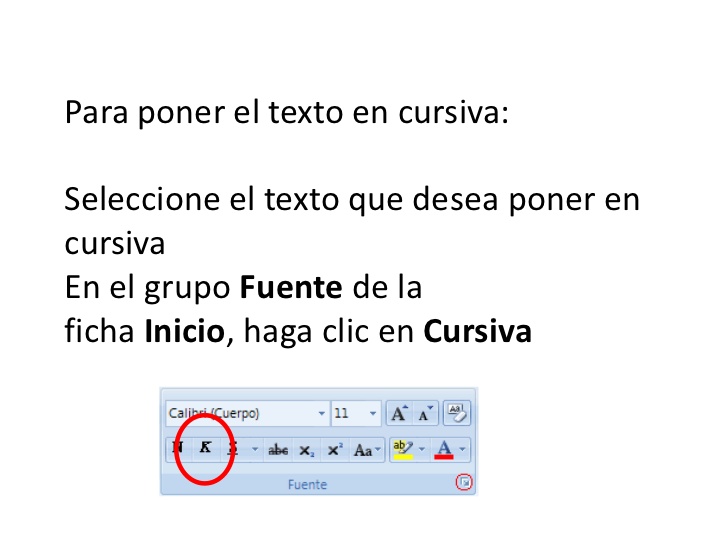Have you ever wondered how to add a touch of elegance and emphasis to your writing? Or maybe you've seen text slanted to the right and wondered about its purpose? That, my friend, is the power of italics! Italics, those slightly slanted letters, might seem like a small detail, but they play a crucial role in clear and effective communication.
Whether you're crafting a compelling essay, writing a professional email, or simply adding flair to your social media posts, knowing when and how to use italics can significantly impact how your message is received. They can subtly highlight important points, distinguish certain elements, and add a touch of sophistication to your text.
In this comprehensive guide, we'll delve into the world of italics, exploring their history, significance, and various applications. We'll uncover the "why" behind their use and equip you with the knowledge to wield their power effectively.
From understanding when to italicize titles to emphasizing specific words or phrases, we'll leave no stone unturned. We'll also address common mistakes to avoid, ensuring that your use of italics is always accurate and impactful. Get ready to elevate your writing and make your words stand out!
But our journey doesn't stop there. We'll explore the practical side of using italics, providing you with a step-by-step guide on how to apply them effortlessly in your digital documents. Whether you're a seasoned writer or just starting out, mastering the art of italics is an invaluable skill that will enhance your communication skills across various platforms.
Advantages and Disadvantages of Using Italics
While italics offer a range of benefits, it's essential to understand both their advantages and potential drawbacks to use them effectively.
| Advantages | Disadvantages |
|---|---|
| Emphasize keywords or phrases | Overuse can diminish their impact |
| Improve readability and clarity | Can make text look cluttered if overused |
| Add visual interest to text | Not always suitable for all types of writing (e.g., technical documents) |
Best Practices for Using Italics
Here are some best practices to keep in mind when using italics:
- Use sparingly for emphasis: Italicize only the words or phrases that require special attention.
- Be consistent: Follow established style guidelines for consistency within your document or publication.
- Consider your audience: Be mindful of your target audience and whether italics will enhance or hinder their understanding.
- Don't overuse: Too many italics can make your text look messy and unprofessional.
- Proofread carefully: Always double-check your use of italics to ensure they are used correctly and effectively.
Frequently Asked Questions about Italics
1. When should I italicize titles? Italics are typically used for titles of longer works like books, magazines, newspapers, and movies. Shorter works like poems, articles, and song titles are usually enclosed in quotation marks.
2. Can I use italics for emphasis online? While italics can be used online, they might not always display correctly across all devices and platforms. Consider using bold or other formatting options for emphasis in digital content.
3. Are there any cultural differences in using italics? The rules and conventions for using italics can vary slightly across different languages and cultures. It's essential to consult relevant style guides when writing for a specific audience.
4. Can I use italics in academic writing? Yes, italics have specific uses in academic writing, such as citing book titles, introducing technical terms, and highlighting specific data points in research papers.
5. How can I italicize text on my computer? Most word processing software allows you to italicize text by selecting it and pressing Ctrl+I (Windows) or Cmd+I (Mac).
6. Is it necessary to italicize foreign words? It's generally accepted to italicize foreign words or phrases that are not commonly used in English. However, if the word has become integrated into everyday language, italics may not be necessary.
7. Can I use italics in social media posts? While italics are generally acceptable on social media, their effectiveness can vary depending on the platform and font used. Consider using bold or emojis for emphasis if clarity is a concern.
8. Are there any alternatives to using italics? Yes, you can use bold, underlining, or quotation marks for specific emphasis. However, each formatting option has its own set of rules and conventions. Choose the method that best suits your purpose and writing style.
Conclusion
Mastering italics is a valuable skill for anyone who writes, whether for professional, academic, or personal reasons. By understanding the purpose and guidelines for using italics, you can add clarity, emphasis, and a touch of sophistication to your writing. Remember to use italics sparingly, be consistent with your formatting, and always prioritize readability. With practice and attention to detail, you can confidently incorporate italics into your writing and elevate your communication skills to new heights.
Decoding the yes bank logo a visual story
Two sigma freshman internship application
Unlocking the magic a journey through iconic country music
que es la letra cursiva en word - Khao Tick On
que es la letra cursiva en word - Khao Tick On
que es la letra cursiva en word - Khao Tick On
que es la letra cursiva en word - Khao Tick On
Letras Cursivas Para Copiar : Falso Caligrafia Titulos Schriften - Khao Tick On
que es la letra cursiva en word - Khao Tick On
que es la letra cursiva en word - Khao Tick On
que es la letra cursiva en word - Khao Tick On
que es la letra cursiva en word - Khao Tick On
que es la letra cursiva en word - Khao Tick On
que es la letra cursiva en word - Khao Tick On
que es la letra cursiva en word - Khao Tick On
99 tipos de letras o fuentes cursivas para crear tarjetas de invitación - Khao Tick On
que es la letra cursiva en word - Khao Tick On
que es la letra cursiva en word - Khao Tick On














